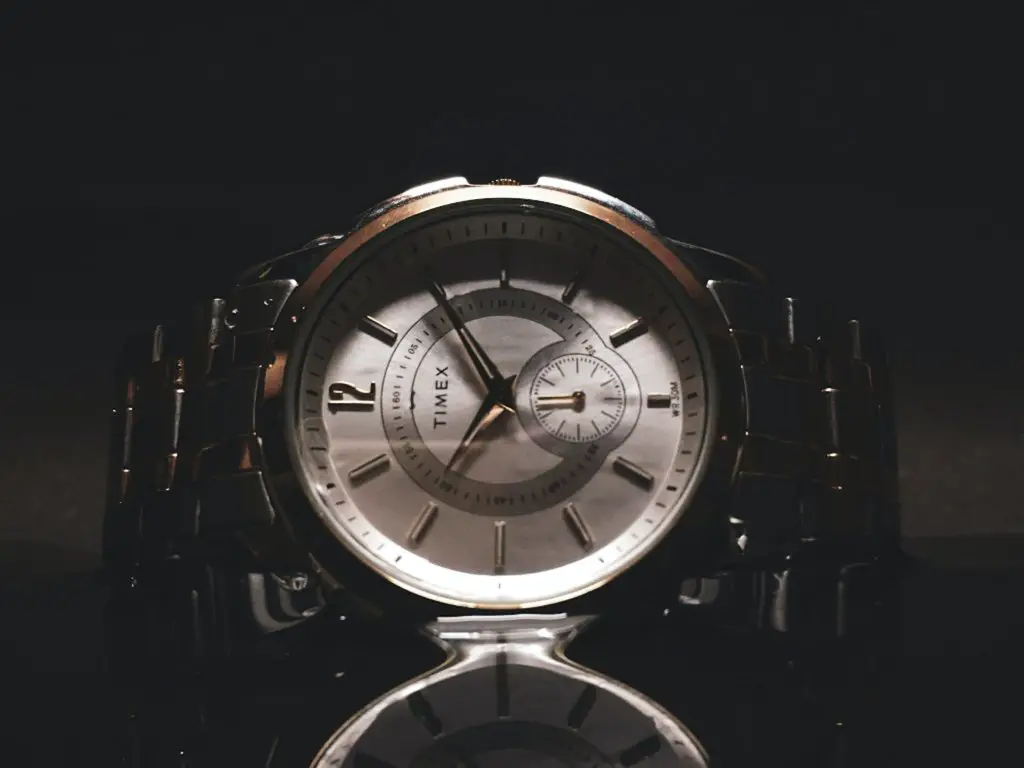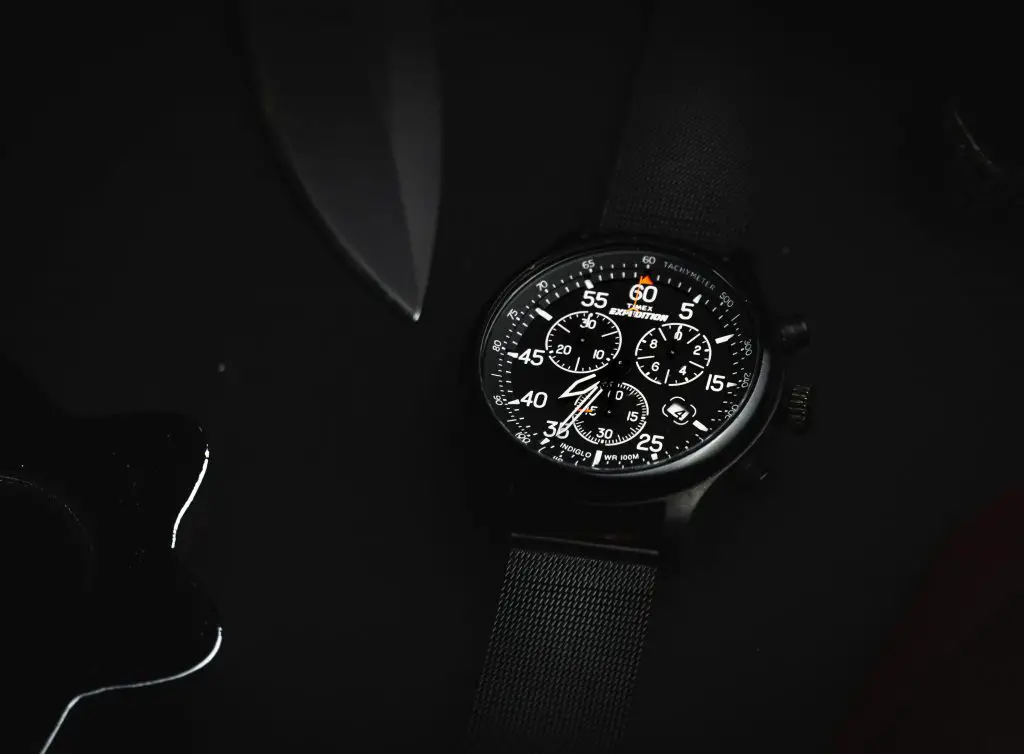Timex is a quintessentially American brand, known for watches with loud ticking sounds and low prices. Since 1854, they have been one of the world’s leading clock and watch manufacturers, and they are still going strong. But do they make their own movements?
Timex produces its own movements. Nowadays, they are not produced in America anymore, but in cheaper places like China. Nevertheless, Timex often owns these factories, so they are producing their own movements.
While the movements aren’t made in America anymore, Timex continues to produce high-quality watches. Read on to learn more about Timex’s movement production and where it all takes place.

Table of Contents
Does Timex Make Their Own Movements?
It appears that while Timex no longer manufactures movements in America, the factories in places like China and Taiwan that produce their movements are owned by the Timex company.
That means that while they are, to an extent, outsourced, many Timex movements can still be considered to be manufactured in-house.
That said, some Timex movements appear to simply be bought from companies like ‘Seagull’ and then modified a bit.
These companies mass-produce watch movements and sell them to watch manufacturers. They are able to sell these movements for a cheap price, perfect for the companies that create more affordable watches.
In truth, Timex has been quite secretive about where their movements are manufactured ever since they stopped being manufactured in America, often giving only the country of origin.
If the watch simply says ‘MOVT China,’ it is up to consumers to try and figure out if that means Timex made it in China or if they bought it from a Chinese company.
With a Timex watch, you’ll usually get a movement that’s made in a cheaper country, such as China. This movement might come from the in-house Timex factories, or it comes from one of the movement manufacturing companies.
Regardless, you’ll almost always get a watch with foreign, outsourced movement.
Does Timex Still Design Movements?
Timex is still involved in designing watch movements. They have a facility in Pforzheim, Germany, which is the base of operations for their design process.
In 2011, Timex designed the revolutionary ‘intelligent quartz’ movements, which used independent motors, digital sensors, and microprocessors to display a huge amount of information.
More recently, Timex has teamed up with SilMach, a French company pioneered in Micro Electro Mechanical Systems (MEMS), to make a MEMS watch movement!
The engineering is quite complex, but in essence, this breakthrough means that analog quartz watches can be designed with longer battery life, fewer components, and a smaller movement! Plus, fewer components mean cheaper watches overall.
Intelligent Quartz
In 2006, Timex launched the TX company, which manufactured intelligent quartz movements in the Philippines. The company was discontinued in 2012, with the production of their movements being moved to a new sub-brand called Intelligent Quartz (I.Q.).
Most Timex quartz movements are still manufactured in Southeast Asia, often in-house.

What Is A Watch Movement
The movement, or ‘caliber,’ is the engine of a watch. Sitting inside the casing, the movement is an essential part that causes the hands to turn and allows the watch to keep time.
There are a few different watch movement types, which we will go over in the next section. Suffice it to say that they are the powerhouse of the watch, pushing the hands forward and ensuring that the watch continues to keep time.
Mechanical Movements
Mechanical movements were the first type to be invented. Watches with mechanical movements are the classic old-school watches that need to be hand-wound to keep ticking.
Timex made plenty of mechanical movements back in the day, but, as mentioned above, they stopped manufacturing them in 1982.
Mechanical movements that need to be wound are referred to as ‘manual’ movements to distinguish them from automatic mechanical movements.
Timex has recently released a new line of watches called the ‘American Documents’ series, which are made with automatic mechanical movements, but these appear to be manufactured in Switzerland.
However, it is argued that these movements are bought from a Chinese company called ‘Seagull,’ and then modified to remove the automatic winding mechanism. But if that’s actually true isn’t known.
Quartz Movements
At the end of 1969, the first quartz movement revolutionized watchmaking. These movements are much cheaper to make, are very accurate, and require very little maintenance.
They have become the standard technology for budget watches. However, watch enthusiasts still prefer a mechanical movement’s technical craftsmanship, so quartz has not taken over entirely.
These quartz movements work by sending a small electrical signal from a battery to a quartz crystal, which vibrates and creates the oscillations required to turn the motor.
The way to tell a quartz movement watch from a mechanical one is that the second hand on a quartz watch will jump from second to second, whereas the second hand on a mechanical watch will smoothly glide around the face of the watch.
Automatic Movements
Automatic movements are a type of mechanical movement that does not have to be wound. They use the wearer’s motion to harness the energy, using a metal weight known as a rotor.
This energy is then used to wind the watch automatically. Surprisingly, automatic watch movements have been around since the late 1700s!
Timex currently only makes one automatic movement watch: the Marlin automatic. While they do not advertise the fact, the movement used in these watches is likely from China or Switzerland, although it may still be manufactured in-house.
Unfortunately, Timex does not make clear in its literature whether or not they manufacture these movements themselves.
Automatic mechanical movements are also called ‘self-winding’ movements. That is not quite accurate, however! It is the motion of the wearer which causes these movements to wind. If you leave a watch with an automatic movement in a drawer, it will not self-wind.

The Timex Story
In case you do not already know, Timex has been a leading timepiece manufacturer for nearly 170 years! The company exploded in the 1950s with the introduction of the V-Conic, one of the world’s first affordable, mass-produced watch movements.
In 1958, they introduced their iconic slogan: “Takes a licking and keeps on ticking”. By the start of the ’60s, Timex was the number one watch brand in America, with one in every 3 watches sold being a Timex.
While they did not retain their market share domination, Timex remains a highly respected manufacturer of affordable but beautiful watches.
They are still known for their durability and amazing prices. As mentioned, Timex watches are also known for having quite a loud tick, but this does vary from model to model. Timex watches also last surprisingly long, given how inexpensive they are to purchase!
These days, Timex Group USA is owned by a Dutch company called Timex Group B.V. This parent company also owns TMX Philippines and Timex Group India, both of which manufacture the quartz movements which are often used in Timex watches.
Timex Group B.V. also produces watches under brand names like Nautica, GUESS, Versace, and Ted Baker London; what you would traditionally consider ‘Timex’ has become a smaller part of a huge corporation.
A Quick Summary
Timex is an enduring and iconic brand that continues to design and manufacture exquisite watches at amazing price points. Even if the movements are made abroad, Timex remains a quintessentially American Company.
The American Documents series has brought Timex watch manufacturing back to America, but the movement is the one part that is still manufactured abroad.
However, it seems that many of the movement manufacturers in Southeast Asia are, in fact, in-house manufacturers for Timex, meaning that they do not simply buy their movements from other companies.
